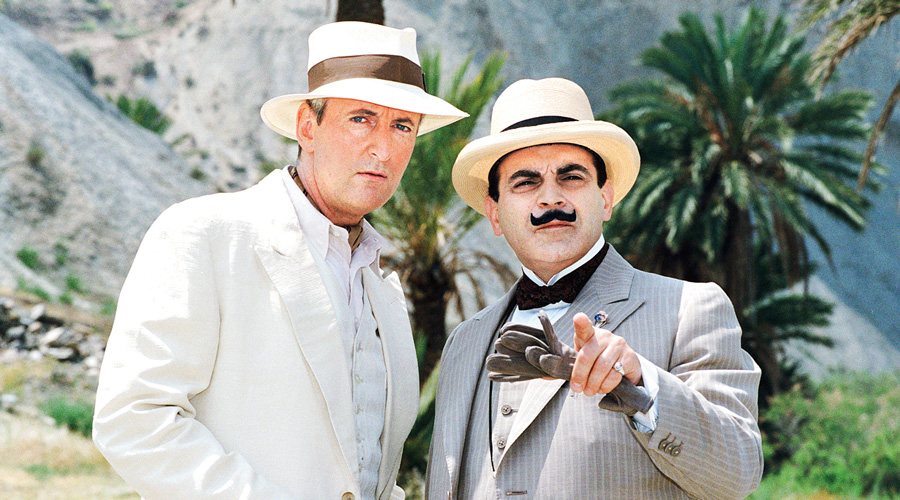It may appear odd to dedicate a piece to Arthur Hastings on the 100th birth anniversary of Hercule Poirot. But the Boswells of great detectives — Hastings to Poirot, John Watson to Sherlock Holmes, or our own Topshe to Feluda — do not have an ornamental existence. While penning Poirot’s first case in quiet, eerie Dartmoor — Arthur Conan Doyle had set The Hound of the Baskervilles in this very place in Devon — Agatha Christie had imagined that Hastings would be the ‘stooge assistant’ to the cerebral Belgian detective. The lady got it right and wrong.
Christie’s detective, it would seem, was the very antithesis of Conan Doyle’s sleuth. In response to the wiry, shoddy, sullen Holmes, Christie came up with the short, dignified, nattily-dressed, sociable Poirot. The two share their brilliance in the art of detection, of course, but even here there is a difference in approach. Antonio Gramsci took note of this, and took sides, preferring Poirot’s ability to combine experimentation with psychological insight to Holmes’s reliance on the ‘cold science of deduction’.
But where Christie meets Conan Doyle, as it were, is in their fleshing out of the assistants. Hastings shares with Watson a military experience, the gift of chronicling, a love for gambling, a glad eye, as well as the brawn-over-brain syndrome. But their limitations are compensated by a singular, under-rated accomplishment: it is the satellite that quite often forces the celestial companion to bare his mellower, human side. The first thing that Topshe, recovering from a “birashi shikka” punch in “Napoleon er Chithi”, sees is an anxious Feluda hovering over him; even the unflappable Holmes is mildly apologetic for causing Watson to faint with his dramatic resurrection in “The Adventure of the Empty House”.
But these relationships, although deeply affectionate, are not uncomplicated. For instance, in “The Big Four”, when the life of Hastings’s wife is in peril, he does not hesitate to bargain for her safety by bartering Poirot’s well-being. Poirot returns the favour — in his final case. In Curtain, he has no qualms about asking the now widowed Hastings to marry Elizabeth by manipulating his partner’s belief in his (diminished?) charms; this, by no means, is benign banter between friends.
These rare creases in the fabric of the comradeship between the classical detective and his invariably male sidekick help the reader arrive at a critical deduction. In these partnerships — apologies, Ms Christie — the assistant is no stooge. He is, in fact, a mirror that captures, unfailingly, the light as well as the darkness that are elementary to Poirot, Holmes and their peers.

